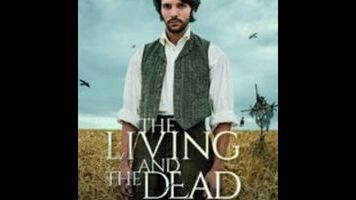As befits this time of year, a defunct supernatural thriller from BBC One is seeing new life Stateside. BBC America has resurrected Ashley Pharoah’s The Living And The Dead as part of its Halloween fright fest. The short-lived series has something to offer fans of classic ghost stories as well as those with a taste for more contemporary horror fare, often in the same episode. The Living And The Dead juggles several storytelling techniques, including a brief foray into the found-footage genre. In less capable hands, the many ideas in this sumptuously shot series would completely devolve into an unwieldy pastiche, but Pharoah and his directors have clear visions for each detour, which the series leads handle with aplomb. It’s still a bumpy ride, but you won’t mind when there’s such gorgeous scenery.
Set in the fictional hamlet of Shepzoy, The Living And The Dead stars Colin Morgan as Nathan Appleby, a psychologist who’s made a name for himself in London. He returns to his family’s ancestral home with his wife Charlotte (Charlotte Spencer), a progressively minded photographer who shows off just how modern she is by taking erotic snapshots with her husband. After the death of his mother, the prepossessing pair decides to leave a bustling, mid-Industrial Revolution London for the English countryside. But like so many vacationers who take a (deadly) wrong turn, their plans quickly go awry. Soon, the couple and their farm are plagued by malevolent spirits as well as more earthly threats—and possibly time travel.
It quickly becomes obvious that Pharoah and his co-creator Matthew Graham had difficulty settling on a genre—The Living And The Dead is part procedural, part otherworldly drama, with some sci-fi elements. There’s also a monster-of-the-week angle thrown in for good measure (it’s one component that works surprisingly well). It’s hard to imagine so many sources could be effectively fused in a single show. The results are certainly mixed; at times, The Living And The Dead doesn’t feel so much ambitious in its combination of science fiction, creature features, and Gothic horror as it does apologetic. If the viewer isn’t sold on the atmospheric chills, then perhaps they’ll settle for a more obvious scare. Or, if the tension hasn’t been heightened sufficiently, maybe they’ll be too invested in a character’s tragic backstory to care about jumping at the sight of the next specter.
The series’ abbreviated run—it ran for six episodes in its first season, but wasn’t renewed—could be to blame for the thematic overload. But that succinctness is more often than not a hallmark of British programming, and the show’s 19th-century setting could hardly avoid allusions to Gothic and Victorian literature. So there are shades of Mary Shelley’s Frankenstein as well as Jane Eyre, as naturalism and modernity battle with the supernatural and convention. And if The Living And The Dead had just stayed on one of those courses, the brief stint could be held up as a good example of efficient storytelling. But as it stands, it just appears that Pharoah and Graham got a bit greedy or confused in their goals.
Where they’re most successful is in telling the more intimate stories between husband and wife, as well as in subverting the typical setting for their otherwise spooky tales. The cast is solid, but its two leads are both standouts. Morgan, who’s dabbled in fantasy and science fiction on Merlin and Humans, portrays Nathan’s shift from the archetypal elegant Victorian gentleman to the tortured Byronic hero both realistically and effortlessly. And as Charlotte, Spencer is vivacious and refined, loyal but not blindly so. Charlotte could be a spiritual descendant to Jane Eyre and other Victorian heroines—she becomes the savior, though still within the social confines of the 19th-century setting. The Living And The Dead might be DOA, but Morgan and Spencer have established themselves as versatile, magnetic performers. They could and should both end up in any number of period or contemporary pieces.
Another revelation is the series’ transformation of the bucolic countryside into something more foreboding. Directors Alice Troughton and Sam Donovan, who each tackled three episodes, are able to cast the beautiful, sleepy village of Shepzoy in a much more ominous light. There’s no need to rely on the foggy bogs or characteristically dreary English landscape. Plenty of things go bump in the night, but the mornings are hardly much more comforting. It’s in the daylight that Charlotte and Nathan must confront their demons, external and otherwise. The same land that nourishes the villagers and the Applebys also threatens them—sometimes overtly, other times by just withholding its bounties. This quiet menace fits right into one of Pharoah and Graham’s themes; if only they’d settled on one.

